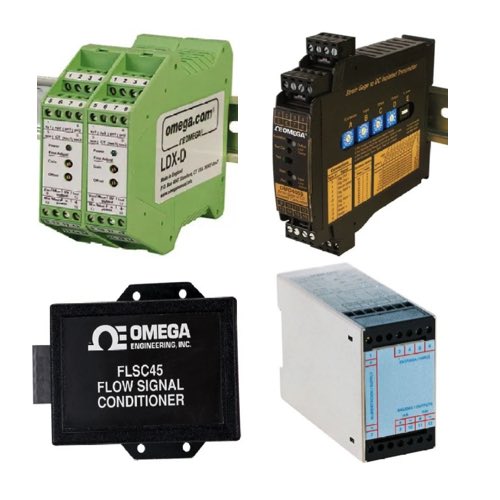Omega Signal Conditioners

Omega Engineering signal conditioners are designed to improve the quality and compatibility of electrical signals used in industrial and laboratory measurement systems. These devices play a crucial role in adjusting input signals into formats suitable for further processing, often converting low-level signals from sensors into standardized outputs like 4-20 mA or 0-10 V. Omega's signal conditioners are known for their precision, reliability, and versatility, ensuring that measurements remain accurate even in environments where signal interference, noise, or long transmission distances could otherwise affect performance.
Engineered for a wide range of applications, Omega signal conditioners support temperature sensors, strain gauges, pressure transducers, and other critical instrumentation. They are built with features such as isolation, amplification, filtering, and linearization, making them ideal for demanding environments where signal integrity is vital. Omega offers compact DIN rail mountable models as well as panel-mount versions, allowing easy integration into existing systems. Their robust construction and advanced technology ensure dependable operation even in industrial settings with harsh electrical noise and temperature fluctuations.
Signal Conditioning: Isolators, Converters, Amplifiers and Splitters
Signal isolators are used to protect sensitive equipment, such as PLCs, from potential hazards that may originate from devices they are connected to, such as sensors or transmitters. Isolators can also be used to filter any noise that might arise from disturbances along the signal path back to the PLC.
Signal converters take one type of signal and change it to something else. For example, a signal converter can interpret an RTD signal and convert it into something that a PLC can understand.
Signal amplifiers increase the resolution of an input signal, allowing for more accurate and detailed data to be sent to the controller, enabling better monitoring and control of devices. Another important function that amplifiers perform is increasing the signal-to-noise ratio.
Signal splitters do not change the signal, but allow the signal to be sent to more than one location. For example, a signal splitter can be used to send data to two different PLC’s without any signal degradation.

